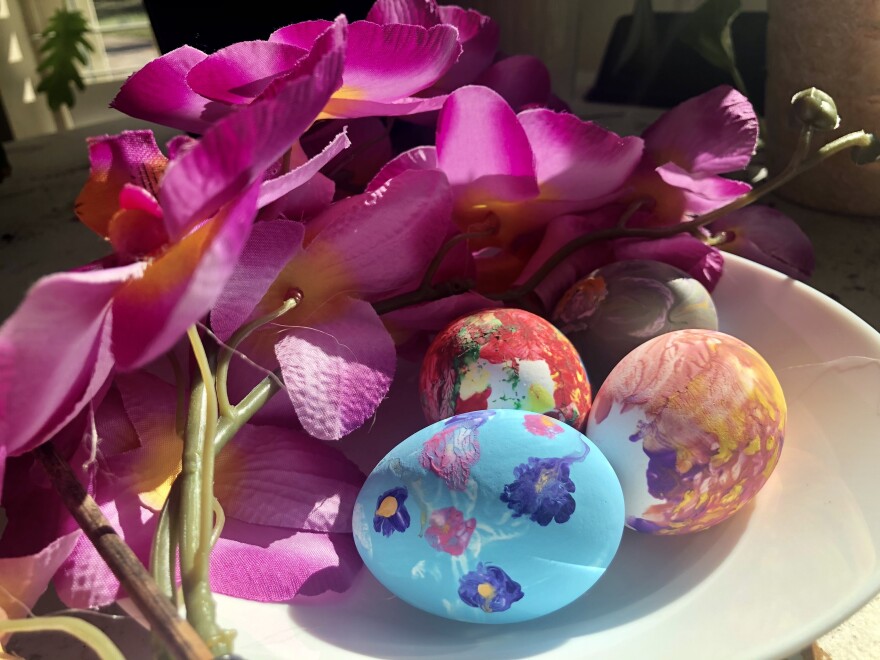Vacuuming is a familiar sound for me in spring. It means that my mother starts her vigorous cleaning regimen, and the seasons are changing. For us, it’s a way to clear out the negative energy of the past year.
“We spring clean during Navroz, so basically, the idea behind it is purifying your home, cleaning out all the evils,” my mother told me.
Navroz.
It’s a holiday that has spiritual significance to me and my Ismaili Muslim community, marking a new beginning. But it has more cultural importance for other Central and South Asian communities, where it signifies the end of winter.
Mavi Mavlonazarova is from Tajikistan in Central Asia. She spent half of her life in the mountainous region of Pamir. Now she carries her teachings from back home to her community in Houston.
“After a long winter, 'cause where we grew up it's the mountainous region of the country, and a lot of snow, so it was truly the awakening of Spring,” said Mavlonazarova.
“Basically, in ancient tradition, it goes back all the way to Zoroastrianism, which has a lot of great spiritual significance and symbolizes the victory of good over evil, and joy over sorrow."
Navroz is a word that quite literally translates into “new day” in Farsi. Since Navroz takes place alongside the spring equinox, those who celebrate this holiday are given the chance to reflect on the past, and start fresh on this new day.
On the morning of Navroz, March 21, the celebrations begin.
In past years, Central Asian communities set up massive feasts and start every day of the festival week with the sound of the daf, a Persian instrument that takes the form of a large drum. Mavlonazarova and her siblings would bring home a branch of a tree, symbolizing spring and the emergence of new life.
Mavlonazarova added, “At that moment, as we’re entering the house, our grandma welcomed us with love and warmth and a pinch of flour, and that essentially symbolizes peace and prosperity which is cultural and goes generations back.”
Also back home, children and young adults would participate in a similar tradition to trick-or-treating. They would throw a shawl into the homes of family and friends, sing a short tune and be rewarded with candy, money or food.
That's not happening this year in Central Asia nor in Texas. Nasiba Beecher, also from Tajikistan, cooks large feasts for her family from her home in Dallas.
“Any Eid, or holiday, is about this table full of food. Baked goodies and all kinds of food. People will stop by at any point to share the holiday with you,” Nasiba said.

This year, they don’t quite plan to do their normal knocking on neighbors' doors and drop-off of food. One thing is definitely staying the same though — the food made by Nasiba’s husband Mitchell.
“I make the plov (a rice dish). Nasiba’s grandma and aunts taught me how to make it multiple times while visiting. We also make samsa (a savory stuffed bun), so a lot of cultures have their own version of samsas or sabusas,” Mitchell said.
While most people celebrate indoors, my friend Ammn and I paint eggs and make bracelets, a tradition we’ve done since we were little. This year, my friends and I decided to do that at an outdoor festival.
In anticipation of Navroz this weekend, people gathered this week outside for a socially-distant, masked up festival at the Asia Society Texas Center. However, this doesn’t even compare to the festivals my community hosts this time of year. Over 40,000 people make up the Ismaili Muslim community in Texas. A huge chunk of us live in Houston and we're very accustomed to celebrating Navroz together.
Our Ismaili Muslim community is definitely trying to make up for the change in tradition this year with big virtual events.
“This year, the Shia Ismaili community has partnered with the Museum of Fine Arts Houston, the Houston Children’s Museum, Asia Society Texas Center and the City of Houston to celebrate Navroz virtually,” Mavlonazarova said.
We celebrated the arrival of 2021 merely three months ago, but Navroz offers a fresh start. In many cases, that means renewing forgotten New Year's resolutions and being given a second chance.
With flowers in bloom and and our homes spotless, we welcome a happy beginning of Spring, and Navroz Mubarak.
Got a tip? Email Haya Panjwani at hpanjwani@kera.org. Follow Haya on Twitter
@hayapanjw.
KERA News is made possible through the generosity of our members. If you find this reporting valuable, consider making a tax-deductible gift today. Thank you.

